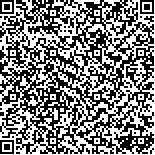下载中心
优秀审稿专家
优秀论文
相关链接
摘要

首先,联合机载激光雷达(LiDAR)数据提取的海岸带数字表面模型(DSM)与验潮站数据提取的高、低潮面进行相交运算,生成"水陆二值图像",然后对其以提取边缘的方式提取高、低潮潮位线;针对LiDAR光束无法穿透水体导致低潮线附近DSM为无效值的缺陷,采取移动趋势面拟合法外推概略低潮线附近DSM,在此基础上重新提取更精确的低潮潮位线。实验表明,该方法能在较少人工干预的情况下有效提取高、低潮潮位线。
First, a binary image containing only land and ocean pixels is generated by intersecting the LiDAR-derived shoredigital surface model (DSM) and the ocean surface derived from tidal gauge data at first. Then a series of image processing algorithmsare applied to extract preliminary high and low tide lines. Since LiDAR pulses can not penetrate into water, some regionsnear the low tide line may have invalid DSM values. In order to overcome this disadvantage, a mobile trend surface fitting methodis used to extrapolate the DSM near low water lines, hence more accurate low tide lines can be extracted. Experimental resultsshow that this method can extract high and low tide lines effectively with less manual labors.

